Tricresyl Phosphate
Synonym(s):Tricresyl phosphate;Tritolyl phosphate
- CAS NO.:1330-78-5
- Empirical Formula: C21H21O4P
- Molecular Weight: 368.36
- MDL number: MFCD02102116
- EINECS: 809-930-9
- SAFETY DATA SHEET (SDS)
- Update Date: 2024-12-18 14:15:32
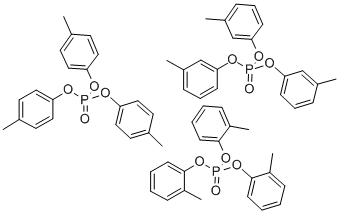
What is Tricresyl Phosphate?
Chemical properties
Tricresyl phosphate is an isomeric mixture of phosphoric acid esters of cresols. It is an odourless and colourless oily liquid (molar mass 368.4 g/mol, melting point –33°C).
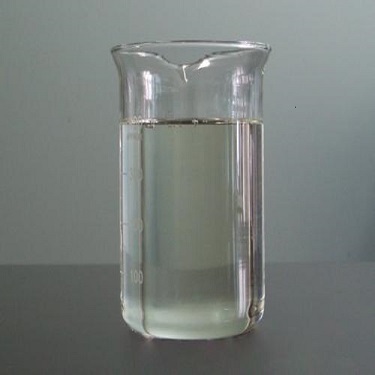
Tricresyl phosphates were used as flame retardants and plasticisers in PVC, nitrocellulose and acrylates.
The Uses of Tricresyl Phosphate
Tricresyl phosphate (TCP) is used as a solvent for nitrocellulose esters and numerous natural resins. It is a plasticizer for chlorinated rubber, vinyl plastics, polystyrene and polyacrylic and polymethacrylic esters. Tricresyl phosphate also acts as a binder for resins and nitrocellulose to improve toughness, elasticity and polishing properties of coatings. Alone or associated with hydrocarbons, it is used as an antiwear and antifriction additive in numerous synthetic lubricants, incorrectly termed “oils” by reason of their appearance. It is also employed as a hydraulic fluid. When incorporated in gasoline, tricresyl phosphate counteracts the harmful effects of lead deposits. In addition, it is an excellent fire retardant in many industries.
Usually used as a mediator in the preparation of uranium-sensitive electrode based on membrane containing uranium di-(4-octylphenyl)phosphate as sensor.
The Uses of Tricresyl Phosphate
Tricresyl Phosphate is used as plasticizer in vinyl plastics manufacture, as flame-retardant, solvent for nitrocellulose, in cellulosic molding compositions, as additive to extreme pressure lubricants, as a nonflammable fluid in hydraulic systems, as lead scavenger in gasoline: Yust, Bame, US 2889212 (1959 to Shell); to sterilize certain surgical instruments.
The Uses of Tricresyl Phosphate
Tricresyl phosphate is used as plasticizer in vinyl plastics manufacturing; in spectacle frames; flame-retardant; solvent for nitrocellulose; in cellulose-molding compositions; additive to extreme-pressure lubricants; nonflammable fluid in hydraulic systems; lead scavenger in gasoline; used to sterilize certain surgical instruments; in polystyrene; in waterproofing; in common organic solvents and thinners; in linseed oil; emulsifying agent in cosmetics; in china wood oil; in castor oil.
Preparation
Tricresyl phosphate is prepared by reaction of cresols with phosphorus oxychloride, phosphoric acid, or phosphorus pentachloride:
OPCl3 + 3 HOC6H4CH3 → OP(OC6H4CH3)3 + 3 HCl
The grades of cresol commonly is a mixture of three isomers (o-, m-, p-). The fact that tricresyl phosphate is derived from a mixture and itself is a mixture ensures that it remains liquid over a wide span of temperatures.
A "refined grade" of tricresyl phosphate is prepared by vacuum distillation, or alternatively by washing with 2% sodium hydroxide and water.
Health Hazard
The tricresyl phosphates (TCPs) are part of a series of organophosphorus compounds which have been shown to cause delayed neurotoxicity. The 1930 outbreak of “ginger jake” paralysis was caused by the contamination of ginger extract by cresyl phosphates, used in the processing of the spice. Since that time, there have been several incidents reported of accidental poisoning of food by tri-o-cresyl phosphate (TOCP). There are few case series reports of occupational exposure in the literature. Acute occupational exposures have been described as causing gastrointestinal symptoms followed by a latent period of days to 4 weeks, after which extremity pain and tingling progress to motor paralysis of the lower extremities up to the thighs, and of the upper extremities to the elbow. There is rarely sensory loss. Partial to total recovery may take years. Fatalities have occurred in high-dose ingestion.
Safety Profile
Moderately toxic by ingestion and skin contact. Human systemic effects by ingestion: flaccid paralysis without anesthesia, motor activity changes, and muscle weakness. An experimental teratogen. Experimental reproductive effects. An eye and skin irritant. Combustible. When heated to decomposition it emits toxic fumes of POx.
Potential Exposure
According to the World Health Organization there is no safe level of exposure to Tricresyl Phosphate(TCP).
TCP has been used as a flame retardant in fabric, plastics and rubbers and as a plasticizer in PVC, lacquers, varnishes and nitrocellulose. It is also used as a heat exchange medium and hydraulic fluid. TCP was detected in all house dust samples gathered in two different North American studies.Biomonitoring studies detected TCP in the breast milk of women in Asia and Sweden. EPA has characterized TCP to exhibit moderate persistence in the environment based on biodegradation studies.
Purification Methods
Dry the ester with CaCl2, percolate it through a column of alumina, then distil it under a vacuum. Alernatively pass it through a packed column of alumina at 150o, with a counter-current stream of nitrogen, under reduced pressure, to remove residual traces of volatile impurities. It also crystallises from pet ether (b 60-80o). [Cherbuliez in Organic Phosphorus Compounds (Kosolapoff & Maier eds) Wiley-Interscience Vol 6 pp 454-457 1973.]
Toxicity evaluation
Tricresyl Phosphate is classified by the EPA as a high hazard for reproductive toxicity based on studies of rodents fed TCP. Adverse health effects included reduced fertility, sperm motility, number of live pups per litter, testicular and epidydimal weights, and increased incidence of interstitial cell hypertrophy and ovarian interstitial cell vacuolization.
Ovarian and adrenal gland lesions were observed in rats and liver and adrenal gland lesions in mice fed an isomer mixture of TCP for 2 years in an NTP study. Rodents fed TCP for 13 weeks developed neuropathy.
TCP has been shown to influence neurological damage in humans.
There are three tricresyl phosphate isomers, of which, the ortho isomer demonstrates the highest toxicity.
Properties of Tricresyl Phosphate
| Melting point: | <-40°C |
| Boiling point: | 265 °C10 mm Hg(lit.) |
| Density | 1.143 g/mL at 25 °C(lit.) |
| vapor pressure | 0.03 mm Hg ( 25 °C) |
| refractive index | n |
| Flash point: | >230 °F |
| storage temp. | Store below +30°C. |
| solubility | organic solvents: miscible(lit.) |
| form | Powder |
| color | White to off-white |
| Water Solubility | INSOLUBLE |
| Merck | 14,9763 |
| Dielectric constant | 4.0(80℃) |
| Stability: | Stable. Incompatible with strong oxidizing agents. May soften some plastics. Hydrolyzes slowly under alkaline conditions. |
| CAS DataBase Reference | 1330-78-5(CAS DataBase Reference) |
| EPA Substance Registry System | Tricresyl phosphate (1330-78-5) |
Safety information for Tricresyl Phosphate
| Signal word | Warning |
| Pictogram(s) |
 Health Hazard GHS08  Environment GHS09 |
| GHS Hazard Statements |
H410:Hazardous to the aquatic environment, long-term hazard |
| Precautionary Statement Codes |
P201:Obtain special instructions before use. P202:Do not handle until all safety precautions have been read and understood. P273:Avoid release to the environment. P280:Wear protective gloves/protective clothing/eye protection/face protection. P391:Collect spillage. Hazardous to the aquatic environment P308+P313:IF exposed or concerned: Get medical advice/attention. |
Computed Descriptors for Tricresyl Phosphate
| InChIKey | ISNNXHQBIBWQHG-UHFFFAOYSA-N |
Tricresyl Phosphate manufacturer
Sandhya Group
Tina Organics
AKASH PHARMA EXPORTS
ARRAKIS INDUSTRIES LLP
New Products
Tert-butyl bis(2-chloroethyl)carbamate 4-Methylphenylacetic acid N-Boc-D-alaninol N-BOC-D/L-ALANINOL N-octanoyl benzotriazole 3-Morpholino-1-(4-nitrophenyl)-5,6-dihydropyridin- 2(1H)-one Furan-2,5-Dicarboxylic Acid DIETHYL AMINOMALONATE HYDROCHLORIDE 1,1’-CARBONYLDIIMIDAZOLE R-2-BENZYLOXY PROPIONIC ACID 1,1’-CARBONYLDI (1,2-4 TRIAZOLE) N-METHYL INDAZOLE-3-CARBOXYLIC ACID (2-Hydroxyphenyl)acetonitrile 4-Bromopyrazole 5-BROMO-2CYANO PYRIDINE 5,6-Dimethoxyindanone 5-broMo-2-chloro-N-cyclopentylpyriMidin-4-aMine 2-(Cyanocyclohexyl)acetic acid 4-methoxy-3,5-dinitropyridine 1-(4-(aminomethyl)benzyl)urea hydrochloride 2-aminopropyl benzoate hydrochloride diethyl 2-(2-((tertbutoxycarbonyl)amino) ethyl)malonate tert-butyl 4- (ureidomethyl)benzylcarbamate Ethyl-2-chloro((4-methoxyphenyl)hydrazono)acetateRelated products of tetrahydrofuran
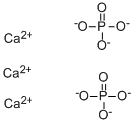

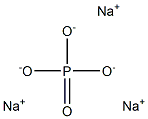

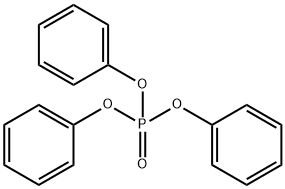
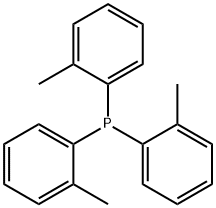
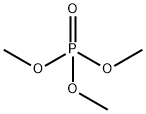

You may like
-
 Tri Cresyl Phosphate (Tcp) 99%View Details
Tri Cresyl Phosphate (Tcp) 99%View Details -
 Tricresyl Phosphate (mixture of isomers) CAS 1330-78-5View Details
Tricresyl Phosphate (mixture of isomers) CAS 1330-78-5View Details
1330-78-5 -
 tri tolyl phosphate CAS 1330-78-5View Details
tri tolyl phosphate CAS 1330-78-5View Details
1330-78-5 -
 Tricresyl phosphate (mixture of isomers) 99% (GC) CAS 1330-78-5View Details
Tricresyl phosphate (mixture of isomers) 99% (GC) CAS 1330-78-5View Details
1330-78-5 -
 Tricresyl phosphate CAS 1330-78-5View Details
Tricresyl phosphate CAS 1330-78-5View Details
1330-78-5 -
 TRICRESYL PHOSPHATE Extra Pure CAS 1330-78-5View Details
TRICRESYL PHOSPHATE Extra Pure CAS 1330-78-5View Details
1330-78-5 -
 Tri-O-Tolyl Ester Of Phosphoric Acid CAS 1330-78-5View Details
Tri-O-Tolyl Ester Of Phosphoric Acid CAS 1330-78-5View Details
1330-78-5 -
 Tritolyl phosphate CAS 1330-78-5View Details
Tritolyl phosphate CAS 1330-78-5View Details
1330-78-5